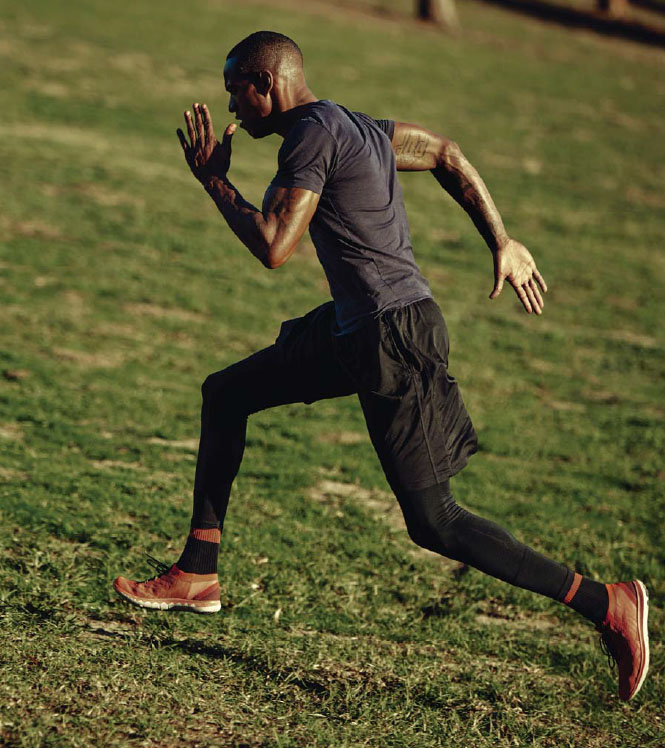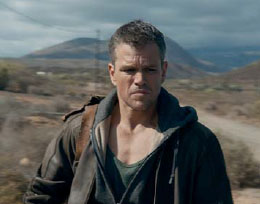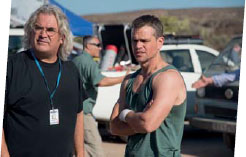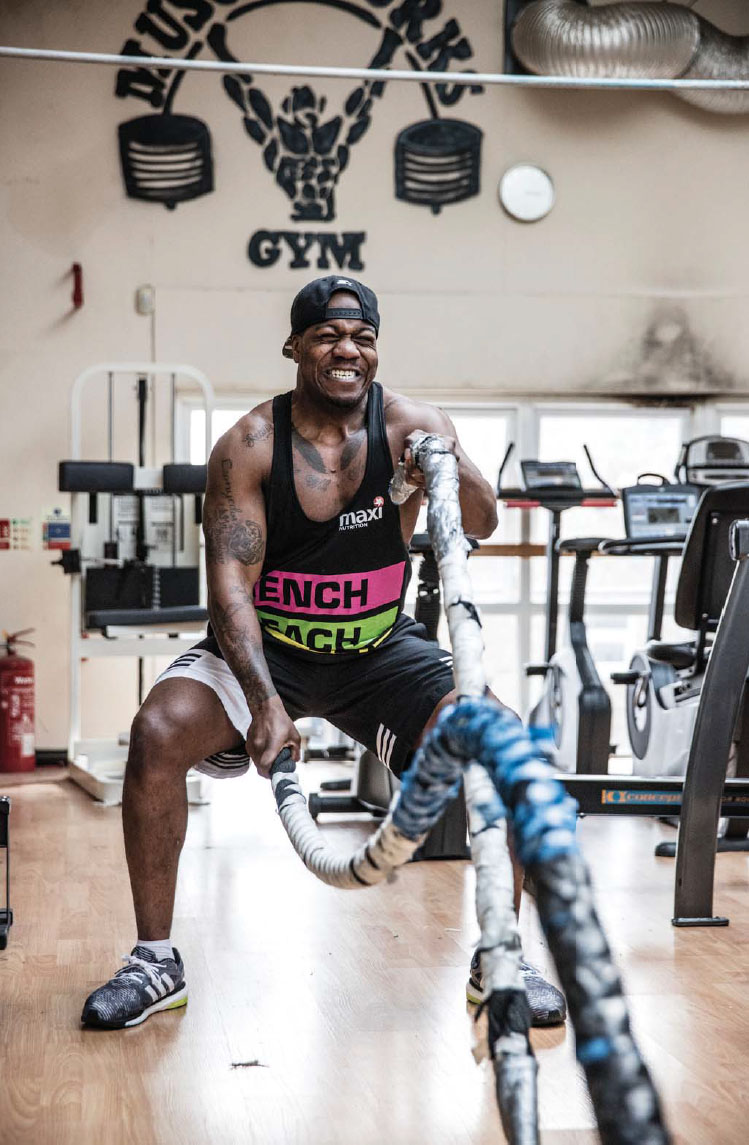IN the summer of 2010, Rory McIlroy was the most promising young talent in world golf. The weight of expectation on his then slender shoulders was immense. The sport was in search of a new hero after Tiger Woods’s fall from grace and the 21-year-old from County Down looked as if he had the raw ability to take his place. Talent doesn’t, however, automatically ensure success and after McIlroy narrowly missed out on both the Open and the US PGA Championships, he went in search of the missing ingredient that could propel him from prodigy to master. In autumn 2010 he started working with the exercise physiologist Dr Steve McGregor. A few months later, after shooting a record-breaking 16 under par, McIlroy won the US Open by an impressive eight-stroke margin.

“I sometimes get questioned about the amount of stuff I do in the gym by golfers who wouldn’t know any better,” says McIlroy when he sits down with MF at The Third Space gym in London. “I just have to say, look at who I was and where I was as a golfer in 2010. I started training in September 2010 and look at me now. Since I started training I’ve won four majors and got to world number one. So it can only help.”
We’re chomping our way through a post-workout mini-feast of protein pancakes and superfood juices, after McGregor has coached McIlroy and MF through a sample of the sessions they do together (see “Train Like McIlroy”, p74). McIlroy – looking lean and muscular – sailed through the circuits of pull-ups, deadlift variations and squat jumps. Of course, no amount of clever training is going to turn a hacker into a world champ – but if you adopt the training tactics he used to get to the top of his game, it might just keep you out of the sand a little bit longer next time you’re on the golf course.

What are you focusing on at the moment in training?
I have certain periods during the year where I focus on different things. At the start of the year it’s strength endurance. In the middle of the year it’s more power-based. I don’t really change my training depending on the tournament I’m playing, it’s more about the time of the year.
At the minute I’m at a time of the year where I’m working on power. Ask me this in February and it’s a different answer. If I play well I can focus on golf from April through to September, so I get the bulk of my training and my base done from January to March. I’m in the gym a lot at that time of year.
What does each workout look like?
If you’re doing a power phase you’re doing three sets of five reps or three reps, depending on the exercise. Right now I’m doing an upper-body and a lower-body split. The lower-body workout is explosive so there are a couple of box jump variations in there. There are reverse lunges but with a weight overhead to work on shoulder stability. Maybe a 6-8kg weight just to stabilise the shoulder. Then there might be a barbell lateral lunge. Most of the time I’ll finish with a core circuit which is four exercises back to back. I’m in and out of the gym in an hour in the middle of the season. That’s when you want to minimise the time you’re in the gym to make sure you’re getting enough time on the golf course.

Do you like being in the gym?
I do. I think I’ve learned to love it. You start off and you hate it, you’re like, “Do I have to do this?” but once you start to see results and you start to get stronger… I think that’s where the enjoyment comes from. It’s the challenge of getting better and when you notice that you are getting better, that’s when you start to enjoy it a bit more.
Performance is obviously the main thing that matters to you, but have you noticed physical changes too?
Yeah, it’s a bonus. It was never something that was a main objective. I don’t need to look like Anthony Joshua but if you do spend time in the gym and you do the right things and you eat well, it’s a by-product of it. It’s not like I’m trying to look good but it’s a nice bonus. If you compare the way I look now with how I looked in 2010, there’s a big difference.
Do you feel different?
Yeah, I do feel different. My posture is better. I’m more stable in my core. I’m stronger in my legs. I can hold positions in the swing better. I wouldn’t say I went into the gym to try to find distance or length, but it has made my body movement much more consistent. And because I’m more consistent in my movements I’m less likely to get into bad habits.
Do you find you have more energy towards the end of a tournament?
I think I recover faster and that’s a big thing. I might feel a bit tired or my legs might get a bit heavy, particularly, say, at the Ryder Cup where you play 36 holes and walk 12 miles[in a day]. It’s more about education – so if I feel tired then it’s, “OK, what do I need to do?” I know I need to refuel, I need to get something into my body or wear compression socks… there are loads of things you can do. That’s why working with Steve has been such a benefit because he has educated me. And all this stuff I’ve picked up along the way means that he’s comfortable with leaving me alone for a couple of weeks and saying, “You know what you need to do”.
Do you give him feedback about how you’re feeling?
Definitely. I got into this because my back was bad so that’s something we’ve had to manage since we started. And there are a lot of things that are specific to me – I always want to be in [back] extension. Being in a hunched position, for me, is not good so I make sure I have good posture to engage my lower back. With the box jumps that I’m doing at the minute, I need to make sure I keep my chest up in the jump because if I hunch over at all, it just doesn’t feel very good. So I’m always giving him feedback about how I feel – we’re in constant contact. We both know my body so well now that we can modify things if we need to, or design programmes around things that might limit me in some way.
Do you do much cardio training?
I like running. I can go and run a 5K in 20 minutes. I used to like the bike but because it puts you in a hunched-over position, I can’t do it any more – and running is better for me because it’s good for your posture. If I was going to do any sort of cardio at all, it would be a run. I could push myself to run a 10K but I don’t really need to – I’ve no ambition to run a marathon at any stage. But I enjoy going out and running a 5K, trying to set a decent time and pace. It’s a nice way to clear the head as well.
You recently announced that you wouldn’t be taking part in the Rio Olympics. Was that a tough decision to make?
I feel like I have four Olympic games a year, which are the majors. They’re the things that are most important to me. I weighed up the risk and the reward, and I felt like the reward for me – and it is different for everyone – wasn’t worth it. So I said, you know what, I’m happy with my four Olympics a year.
PRO TACTICS
Record your progress
“I encourage everyone to take some initial baseline information, which could be taking some pictures of yourself or looking at your range of motion,” says McGregor. “You could get some measurements of your body composition and also make some notes on how you feel when you exercise. Having some markers of progression will help you with motivation.”
The man behind the master
Dr Steve McGregor helped McIlroy win majors and top the world rankings. Here’s how he did it


The project
When you work with a global sports star such as Rory McIlroy, you’re required to slot into a select team of people at the top of their game and help your athlete dominate the competition. “My overall job is to provide the scientific support to the coaching process,” says McGregor. “I bring the objective view, whether that’s analysing the golf swing or looking at some performance analysis statistics. And then I’m the physio, I advise on nutrition and I work on strength and conditioning. Since I came in to work with Rory in 2010, I’ve extended the objective analysis by taking him into a laboratory and quantifying some things that maybe you can’t see on a video: putting numbers to the range of motion, identifying power information and analysing blood profiles.”
The breakthrough
When McGregor joined the team, McIlroy wasn’t in super-athlete shape and there was some fundamental work to be done.“When we started working in 2010, Rory had a back issue and we did various assessments and measures,” says McGregor. “One thing I highlighted was that Rory was particularly weak in his legs. That was leading to a lot of over-rotation in his lower body and more force being put into his spine. So we worked on his leg strength to give him more robustness around his hamstrings, glutes and quads. That gave him more stability and support when hitting the ball.”
The long-term plan
“The main outcome is to allow Rory to practise as often as he can,” says McGregor. “That was what was restricted initially and once we addressed that it allowed him to do more technical practice. That’s what should allow him to become a better player and also give him longevity. As his training continued we focused on injury-proofing and increases in strength and power. That translates into other aspects that are important to him, which is greater shot distance and greater control of the club head.”
TRAIN LIKE McILROY
Do this session, created by McIlroy’s coach Steve McGregor, to perform better than ever

“The focus of this workout is strength endurance,” says McGregor. “It’s important to mention that the work that Rory does is a progression. Initially we work on stability and flexibility. Then you work through phases of training such as range of motion, endurance, strength endurance, strength, power. This workout is a strength endurance component including upper- and lower-body exercise to develop a general base. You’ll get a reduction in tiredness, improved concentration and more stability, and you should find that you’ll feel more comfortable on the golf course over 18 holes. If it’s done effectively that translates into greater power development but also, outside of golf, you’ll feel better. Men’s Fitness readers will know the positive impact on physical health and psychological wellbeing, and this is a good general workout.”
How to do it
First complete the mobility drills. Then do one set of exercises 1A, 1B and 1C in order without any rest to complete one circuit. Rest for one minute, then complete another circuit. Do three circuits in total. Then do one set of exercises 2A, 2B and 2C in order without any rest to complete one circuit. Rest for one minute and go again, completing three rounds of the second circuit in total.

Phase 1 Mobility
Mobility work is the most frequently overlooked element of training. It’s easy to think that it’s just a boring waste of time but spending ten minutes at the beginning of every session doing the following movements will help you get better results. “You always see training images of Rory when he posts a big deadlift but the mobility exercises he does at the start of the session are equally important,” says McGregor. “They’re important for a few reasons. You have to warm the tissue up before you become explosive. If you want to get stronger and lift more, raising the muscle temperature will help you do that.”
How to do it
Do the following drills in order for 30 seconds each without resting between moves.
1 Hamstring sweep
Stand upright, then take a short stride forwards. Keep your leading leg straight with the heel on the ground and bend forwards towards your leg to feel a stretch in your hamstring. As you move forwards, sweep your arms past your front leg and take a step forwards with the opposite leg to continue the drill.
2 Quad grab
Stand upright, then take a step forwards while bringing your back heel up to your backside to feel a strong stretch in your quads by holding your ankle with your opposite hand. Release that leg, take another step forwards and repeat the move on the other side. Keep walking forwards, alternating sides and moving fluidly.
3 Lunge tilt
From standing, take a step forwards then lower until both knees are bent at 90°, simultaneously raising both arms overhead. When you are in the lunge position, tilt your torso over to one side and then the other, using controlled movements. Push back to the start and repeat with the other leg.
4 Dynamic side lunge
Stand upright and take a big stride sideways. Bend your leading knee to sink into a side lunge then, in the bottom position, shift your weight across to move horizontally over to a side lunge on the other leg without moving your feet. Return to the start, pivot on one foot to face the opposite direction and repeat on the other side.
Phase 2 Strength endurance workout

1A Romanian deadlift (below)
Why “This is a great lower-body move,” says McGregor. “You need stability as you move but it works the quads, hams, glute control and core stability. To do it effectively you need to have good impingement of your shoulders and good posture, so it’s a really good all-round exercise.”
How Stand up straight holding a pair of dumbbells. With your shoulders back and without locking your knees, hinge at the hips to lower the dumbbells down the front of your thighs. Lower the weights for a count of three until they are just below your knees then return to the start, squeezing your glutes at the top of the move. The aim here is to load your hamstrings rather than bend your knees and work your quads. Your weight should also be on your heels and mid-foot but not on your toes.
How many8-10 reps, then move on to the next exercise without resting.
1B Pull-up (below)
Why “This is a fantastic upper-body exercise but you also need good core control to get into the right position in the first place,” says McGregor. “The involvement of the lats and the lower back is ideal for golfers because most of them will be in a flexed position when they’re swinging or practising so we want to work their posterior chain.”
How Grip a bar with your palms facing away from you and hang straight down. Squeeze your glutes, then pull yourself up without swinging so that your chin is over the bar. Squeeze your shoulder blades together at the top of the move, then lower under control to the start.
How many5-10 reps, then move on to the next exercise without resting.

1C Plank with leg raise
Why “Raising the leg makes it a stability challenge,” says McGregor. “And it’s specific to golf because you have that left versus right rotation. When you rotate to the backswing you’re focusing on your right glutes, and when your fire across to your left you focus on the left.”
How Get into a plank position with your elbows directly below your shoulders and your body in a straight line from head to heels. Without rotating your hips, lift one straight leg off the floor by using your glutes. Lower that leg and lift your other leg off the floor. Alternate sides.
How many8 reps each side. Rest for a minute, then complete another circuit.

2A Reverse lunge (right)
Why “The reason I like the reverse lunge is it works more on eccentric control [the lowering phase of the move],” says McGregor. “You get a lengthening of the muscle tissue which is good for golf because you want to maintain lower-back extension where your back is upright. Forward lunges put people into forward flexion and that’s what we’re trying to avoid.”
How Stand upright holding a dumbbell in each hand. Take a big step backwards with one leg then bend both knees until they are bent at 90°, making sure your front foot is flat on the floor. Push back up to the start and repeat the move on the opposite side.
How many6-8 reps each side, then move on to the next exercise without resting.

2B Renegade row (right)
Why “This combines upper-body control and shoulder blade stabilisation,” says McGregor. “The lats are responsible for pulling the weights up and thanks to the left versus right component, you can see if there’s a weakness in either side.”
How Start in the top of a press-up position, holding a dumbbell in each hand. Keeping your hips still, row one dumbbell up to your armpit, then return it to the floor. Focus on pulling the elbow back to properly engage your latissimus or lat muscles – the big ones in your back. Repeat the move on the other side and alternate reps for the duration of the set. To make the move more challenging, bring your feet together. To make it easier, move them apart.
How many6-8 reps each side, then move on to the next exercise without resting.

2C Jump squat
Why “When you explode upwards that’s triple extension,” says McGregor. “And in a golf swing we extend from the hip, knee and ankle, so it’s a really good exercise for getting that triple extension, which will help you hit the ball more powerfully.”
How Stand with a box in front of you. Lower into a quarter squat, moving your arms back as you sink down, then explode upwards to jump onto the box, swinging your arms forwards to give yourself extra momentum. The box doesn’t need to be high but each jump should be an all-out effort. If you feel that your performance is beginning to suffer, stop the exercise. This is about quality, not quantity, of reps.
How many5 reps. Rest for a minute, then complete another circuit.

PRO TACTICS
Stay in control
“Focus on controlling the movement and feeling stable,” says McGregor. “We’ve all seen people lift more than they should. Their joints come out of line and that increases the pressure and stress on your tendons and ligaments. So control and good form are vital – only then can you start to increase the resistance or increase the repetitions.”
Never stop improving
To access more McIlroyinspired workouts, download the new Nike Training Club app from the App Store. Once you input your details you get personalised plans designed to help you achieve your workout goals.
























